|
With Christmas around the corner, blogger Melissa Santell @FoodxFeels has featured Vineration Wine Club in her new blog post, "9 Gifts for the Ultimate Food Lover"! Read the article here.
Tampa/AustinTX food blogger Kiera Andrews of @ThisBabeEats also gave our Wine Club a try and had this to say. Thanks Melissa and Kiera for trying Vineration and recommending our club!
0 Comments
Are you still searching for those perfect gifts for your wine-loving friends? I have you covered! Below are tried + true wine products which pass the Vineration test.Wine
Gear
Books
Splurge
Get to know Vineration wine scout Brian Seel in 7 questions.What are your favorite varietals? I love spicy reds and aromatic whites like Syrah, Grenache, Cabernet Franc, Zinfandel, Chenin Blanc, and Riesling. I can find a great wine from any category, but I personally love these varietals because most over-deliver on quality for the price. How many wineries have you visited? Nearest I can count: 230 total Which wine clubs do you personally belong to? Robert Young Estate, Williams Selyem, A Tribute to Grace, Carlisle, MacLaren What is the greatest wine you’ve ever had? I can’t name just one! Among my all-time favorites: 2012 Felton Road Block 5 Pinot Noir, 2008 Lindaflor Malbec, 2000 Corison Cabernet Sauvignon, 2013 Craggy Range Le Sol, 1979 Smith Madrone Cabernet Sauvignon, 2013 Lagier Meredith Syrah What's the best food & wine pairing? A dry or off-dry riesling with Thai curry is the ultimate pairing! The riesling's fruit flavors really complement the curry's kaffir lime, Thai basil, and coconut flavors. The wine's high acidity helps cut the spiciness and refreshes your palate. Do you have a favorite wine memory? One moment is really special: The grape stomping competition at the 2017 Sonoma Vintage Festival. Lindsay and I entered the competition when she was 5 weeks from Georgia's due date. The goal is to crush the most juice possible out of a barrel of grapes with your bare feet! We didn't win, but it was a quintessentially fun, local, and messy wine country experience. What is the world's most beautiful vineyard?
Rippon Vineyard in Wanaka, New Zealand is astoundingly breathtaking. The winery is perched above the gentle sloping Tinker’s Field vineyard which rolls into the sapphire waters of the eponymous Lake Wanaka. The far side of the lake is bulwarked by the aptly named Minaret Peaks of Mount Aspiring National Park. The juxtaposition of sloped vineyard rows, shimmering lake, and snow-capped monoliths is a majestic formula which commands wonderment. It’s a place that any poet-laureate would dream of immortalizing in verse. The Historic Vineyard Society hosted their largest-ever tasting at San Francisco's Press Club wine bar on Saturday, April 21. Thirty producers were present, both stalwarts and upstarts of the California wine scene. In the past HVS has hosted vineyard tours and dinners, but this year, they wanted to involve more producers, said HVS president Mike Officer. 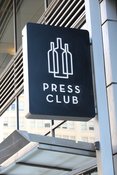 The initial attraction for attending this event was the opportunity to taste 76 wines from some of California's most venerable vineyards and respected winemakers. The real reward was that a sub-level existed to this event: it was an in-depth study in terroir through a de-facto horizontal tasting. Among dozens of vineyards represented, multiple expressions of Wirz, Evangelho, Bechtold, Besson, and Mancini vineyards were poured by multiple producers. For a wine geek, there was no better chance to examine the nuances in winemaking than at this HVS event. With 215 official attendees, the wood-paneled basement bar was stuffy. During the core of the event, I had to muscle through the crowd to get a pour, and limited table space made diligent note-taking a challenge. But popularity is a good problem to have. I hope HVS continues to host special events like this more frequently. Of the 53 wines I tasted, here are the highlights. Top Wines Arnot Roberts 2014 Cabernet Sauvignon, Montecillo Vineyard, Moon Mountain District - Tobacco, bell pepper, gravel, subtle cassis, high but balanced acid, killer structure, tight but pleasant tannins. It's very old world style Cab; a beautiful wine that expresses terroir. - 10 Birichino 2015 Besson Grenache - Owner John Locke told me this includes some whole cluster fruit that was apassamiento dried for tannin concentration. It's a really lovely wine, big fresh red fruit up front, light stemmy tannins, and very complex on the palate. Among several Besson grenaches I've had, this is one of the most interesting. - 9 Calder 2015 Mendocino Carignane, Rivera Vineyard - Calder owner/winemaker Rory Williams told me this Carignane is grown behind a cemetery in Ukiah! Dark red fruit, medium plus acid, medium body, soft tannins, pretty juicy and elegant. It was among my top Carignanes of the day. - 9 Calder 2015 Evangelho Carignane - High acid, super fresh structure, incredibly bright red fruit with spicy licorice undertones. Evangelho Carignanges don't always do it for me. They tend to be made with overwhelming acidity. This was one of the more balanced expressions. - 9 Carlisle 2015 The Derivative White Wine - Made from a plurality of Semillon from Monte Rosso Vineyard, the oldest Semillon in the U.S. Great citrus aromatics, lemon curd on the palate, rich body, lanolin finish. The richness of the fruit gives the impression of some residual sugar. - 9 I. Brand & Family 2016 Enz Vineyard Mourvedre, Lime Kiln Valley - High acid, buried earthy dark fruit, stemmy tannins, elegant medium body with a long finish. - 9 Precedent 2016 Victors Zin, Lodi - Awesome textbook Zin with great balance, smooth body, fruit forward but elegant with structure. The best Lodi wine I tasted of the day. - 9 Reichwage 2016 Mancini Ranch Carignan - A new winery from Max Reichwage, the new owner of this historic RRV vineyard. Beautiful aromatics, round red fruit, white pepper, crazy musty/tarry character. - 8 Robert Biale 2016 Basic Black Heritage Blend - Killer depth, black fruit, spicy herbs, cocoa, lots of slate & structure. Solid wine from a storied Zin specialist. - 8 Stirm 2016 Zinfandel Cienega Valley - A lighter, brighter zin with white pepper, rose, cranberry, raspberry notes. Great acidity and a break from heavy zins. - 9 Stirm 2016 Riesling, Wirz Vineyard - Best Riesling I tasted from Wirz that day, some slight R/S giving body, great citrus fruit and plastic dust aromas (in a good petrolly way), medium plus acid, full fruit and full body on palate - 9 Stirm 2016 Cabernet Pfeffer, Lime Kiln - Lovely elegant body, crisp structure and tight tannins, candied cherry, white pepper and sweet cherry/rasberry finish, not as peppery as the name implies. Really quaffable, I could drink this all day. - 10 Turley 2015 Hayne Vineyard Zin - Super elegant body, smoky with deep blackberry notes, it's simply an outstanding wine, period. From Napa's most famous old Zin vineyard, this is the traditional Zinfandel style at its pinnacle - 9 Under the Wire 2013 Sparkling Zinfandel Bedrock Vineyard - The folks behind Bedrock wines also produce bubbly by Methode Champenoise. Amazingly balanced, mild bready notes, bright & crisp, white cherry fruit, loads of minerality. This is definitely not from Chard or Pinot and is a delightful detour. - 10 Favorite Producers: Calder and Stirm
These two newer brands headed by young winemakers blew me away. All of their wines were handled with balance and finesse. Each wine was also immediately drinkable but showed potential for moderate aging. Of course I love and respect many of the winemakers present at HVS who have long-established and consistently deserved reputations. But part of the fun of attending these events is trying new wines from emerging producers. From that aspect, Calder and Stirm rocked my palate with multiple wines. Find them online at: Calder Stirm I used to be very intimidated when ordering wine at a restaurant, especially any fancy joint with a long wine list. After several years of wine travel, living in Sonoma, and earning an official wine certification, I've finally mastered the dreaded wine ordering process. But you shouldn't have to get formal training to feel at ease with ordering outside your comfort zone. So take to heart my core message: IT'S NOT YOUR FAULT! Really. Go easy on yourself... It's. Not. Your. Fault. The difficulty and intimidation felt when ordering wine is the fault of the restaurant and their service staff. Most establishments in which I've dined go about their wine service entirely wrong. Even in some restaurants with a full-time, trained sommelier, the wine ordering process is an abysmal failure. Guests are never given enough time to consider the wine list. The server requests a drink order far too quickly and then promptly confiscates the wine menu. Aforementioned server rarely knows a darn thing about wine. If they call for backup from a sommelier, that individual heaps on the discomfort by speaking in industry jargon and suggesting the second-most expensive bottle on the list. I've developed a surefire strategy to confidently order wine, make your dining experience smoother, and feel like a boss doing so. No matter your level of wine knowledge, even if you're a self-proclaimed expert, this strategy will win. Here Are My Tricks#1 - Accept the fact that wine in restaurants is absurdly expensive. The bar is more profitable than the kitchen. This is common industry knowledge. Restaurants rely on profits from alcohol sales to subsidize the food prep, so the drink margins are larger. Also, a fully-stocked bar and deep wine list is a pricey inventory to keep provisioned. Therefore, bottles of wine are priced at 2-3 times retail cost. Here's a secret: wine-by-the-glass is usually priced at the wholesale cost of the whole bottle! So that $40 bottle of Chardonnay which costs you $8 by-the-glass... costs the restaurant $8. Sorry to be the bearer of bad news, but accepting this reality will make you more comfortable ordering wine. #2 - Do a bit of research prior to dinner. These days, you always read the online menu before choosing a restaurant, right? Well, take an extra minute to peruse the wine list if they also have it posted. Just as you know which dishes are immediately enticing, certain wines will jump out at you. If the list is obscure or concentrated to one region about which you know very little, such as the wines of Croatia, you'll know to ask for guidance. (What the heck is Plavac Mali?!) You'll also get a feel for the value of the wines and will be prepared to spend accordingly. Furthermore, consider the wine preferences of your fellow diners. If they aren't old friends, you may not know what wines they like, whether they are willing to split the cost, or if expensive wines make them uncomfortable. Before or immediately upon your arrival to the restaurant, and ask your companions whether they will partake in the wine and if they have any general preferences/aversions. It's the courteous thing to do. #3 - Consider bringing your own wine. Outside of wine-producing regions, this isn't a very common practice. But if the wine list is complete garbage, consider bringing your own bottle of wine. How can the untrained eye judge if the restaurant wine list is terrible? If you can recall seeing the majority of the brands for sale at your supermarket, then the list is an insult to fine dining. Feel free to bring your own bottle, which the restaurant will charge a corkage fee to serve to you. (Usually $15-30). If the corkage policy isn't explicitly listed on their website menu, then call ahead and ask. Be warned: it's incredibly tacky to bring a wine which is featured on the wine list, and doing so may even be prohibited by the restaurant. On the other hand, if you're celebrating a special event and want to bring your favorite wine despite the fact that the wine list is great, go for it. Just be sure to order pre- or post-dinner drinks from the menu. The restaurant will appreciate that, and if you also buy a bottle of wine off the menu, they just may waive the corkage fee. #4 - Elect a wine delegate. When you sit down in a dining group of 2-6 people, designate one person to order the wines by the bottle. (Larger groups are a whole different ballgame.) Etiquette-wise, first right of refusal should go to the individual who chose the restaurant or can reasonably be considered the "host". Otherwise, nominate the person perceived to have the most wine knowledge. They'll not only feel honored to choose the wine, they'll enjoy doing so. #5 - Pick your meal first. There’s nothing I hate more than a waiter handing me an extensive wine list and then returning for my drink order less than five minutes later. Set the wine list aside unless you have something very specific in mind (or if you already chose your bottle per Trick #2). First select your meals, then go back to the wine list. If you want an aperitif drink while deliberating, get a cocktail or a glass of bubbly to start. You can then order your bottle of wine after you place your food order. This restructuring of the ordering process will allow you time to consider food and wine pairing based upon the table's dishes. It'll also take the pressure off your table mates to make a selection compliant with your wine choice. #6 - Confidently say how much you are willing to spend on a bottle. It’s okay to get the cheapest bottle of wine on the menu if that’s what you want to drink. Per Trick #1, you've already come to grips with the reality that restaurant wine is overpriced. But don't be a cheapskate who settles for the cheapest bottle no matter what. If you've enlisted the help of the server or sommelier, confidently give them some price guidance. Don't be embarrassed if your budget is on the low end. Giving your sommelier wine style criteria without a budget range is certain to end in a costly suggestion. Be proud of the fact that most occasions don't call for an expensive wine. #7 - State what you like. Asking a sommelier for a random wine recommendation is as bewildering as asking a department store clerk for underwear recommendations: they can't tell what you have on and have no frame of reference for what you'd like. If you have a favorite wine you drink each week, tell them that. If you're out for a special occasion, inform them of the best wine you've ever had. And if there is a type of wine that totally disgusts you, reveal that, too. These points of reference will be incredibly instructive to landing on the perfect wine for the night. #8 - Ask questions. Have you never heard of Mencia from Ribeira Sacra? Don't know the difference between Riesling Kabinett and Riesling Auslese? Have no idea where Taurasi or Minervois are located, or what grape varieties they contain? No problem! If the server/sommelier suggests a wine from an unknown place or a varietal you've never heard of, just ask about it! Don't be shy to admit you know nothing about the wine or place. Give them an opportunity to educate you. And then, don't just settle for the facts. Ask the server why they are suggesting the wine and what makes it great. If they can answer those questions with certainty and without condescension, then they've demonstrated their excellent wine service training. Trust their advice and try something new! If they can't answer those simple questions, then they've proven they are inadequately trained and don't know an iota more than you about wine! Perhaps they should go back to working at Applebee's, where "House Red" and "House White" are as complicated as it gets. Now make that reservation, dominate that wine list, and enjoy your night out!I have a confession. I've been drinking more white wine over the last couple years. Here's why you should too. #1. White wines are more versatile. As a whole, red wines are not a very versatile beverage. Drinking a full-bodied red wine outside on a hot day is downright unpleasant. When you want to truly be refreshed (and simultaneously get a buzz), white wine is your best bet. Most whites are ideally consumed between 40° to 55° F , which is a few minutes out of the fridge, but many full-bodied whites are delicious at room temperature. Also, how many times have you been to a fancy party and had a few glasses of red, only to see horrendous wine teeth in your photos the next day? That was me at my wedding rehearsal dinner... Spiffed up in a nice suit, grinning like a grape vampire, unknowingly ruining every photo. Conveniently, my toothy tint matched my purple Brooks Brothers tie. Finally, because most white wines are not fermented for extended periods on grape skins, they don't have a lot of tannin, which red wines do. Tannins are the compounds which dry out your mouth and stick to your tongue, cheeks, and teeth. You need fats from food, usually meats, to counteract the drying effect of tannic red wine. But many white wines don't need to be paired with food to be enjoyed at their prime. Feel free to drink it by itself! Hyper-chilled or room temp. By the pool or at a fancy event. With or without food. White wine can do it all. #2. White wines pair better with most foods. Speaking of food, white wine is a better pairing for the majority of what you eat. We all know white wine and seafood go hand in hand, but it goes with so much more. There are a few reasons why. First, red wine tannins are bitter. Certain foods, like vegetables, can accentuate that bitterness making for an unpleasant pairing. Animal fats best offset tannins, so red wines are traditionally paired with red meats to balance them out. But why are you only drinking white with surf and red with turf? The type of meat doesn't prevent you from pairing it with a white wine. The best pairings are based upon the texture, flavors, and spices of a dish anyways. Focus on these factors when you pair and forget the unwritten red rule. Second, white wines usually have a higher acid content and lower pH than red wines. Strong acidity in wine (tartaric and malic acid in white wines) is the ultimate attribute which makes wine a good complement for food. Acidity cuts through food traits like spiciness and fat, bringing the dish more into balance. Also, highly acidic wines are just plain refreshing. They cleanse your palate and make you feel all zesty. There's a simple reason why Hooters wings and Dom Perignon is a classic pairing: Champagne is very acidic. Third, alcohol doesn't play nicely with spicy foods. Since white wines usually contain less alcohol than red wines, they will be less likely to enhance the heat of spiciness. (Sidebar: the French call this type of heat piquant, which is a lot less confusing than calling a food hot). A big, bold Petite Sirah isn't doing your three-alarm chili any favors. The robust tannins and 15+% alcohol content will ensure that piquant is the only thing you taste. Truly, an ice-cold beer is the best pairing for chili, but a chilled Chenin Blanc would be nice, too. #3. White wines cost less. If we're being honest with each other, this is a REALLY important factor. Don't go broke drinking high-dollar red wines every night. Make white wines your "daily drinker" and save a bundle. There are several reasons white wines cost less than reds. Generally, less oak is used in the making of white wine. If a white is fermented or aged in a barrel, it's often a previously used barrel which imparts no oak flavor. Premium red wines are primarily aged in brand new oak barrels. A high quality new French oak barrel costs around $2,000, which translates to about $6 per bottle of wine! By employing used barrels or none at all, that amounts to serious savings. One key to white wine's affordability is the faster time to market. Red wines are barrel aged for 6 to 24 months to soften the tannins. After that, some producers let them sit in a bottle for a couple more years before releasing them for sale. (The purpose again is to give them time to soften.) White wine is usually aged less than 6 months in steel or concrete tanks and released soon after bottling. The faster time to market equates to fewer storage costs and immediate revenue. Another thing that keeps white wine prices low is that there's less demand for them than red wines. The Cabernets and Pinots of the world get all the press coverage and glamour. Of course, there are exceptions like some white Burgundies and California Chardonnays. But broadly speaking, you can buy some killer quality white wines from world famous producers for half the cost of their reds. #4. There are lots and lots of varieties to try. The White Wine Universe doesn't consist of just Chardonnay, Sauvignon Blanc, Moscato, and Pinot Grigio. These are the most common types you'll find on the supermarket shelf, but they can be among the most mundane options. Here are several recommendations for expanding your horizons: Viognier - Vee-uhn-yay - A silky, aromatic varietal from the southeastern Rhone area of France. It's full bodied, sometimes has an oily texture, and smells like fresh flowers and apricots. A more interesting substitute for Chardonnay. Lots of American wineries in CA, OR, and VA are getting into Viognier. Chenin Blanc - The main white grape of western France's Loire Valley, it's also the signature white of South Africa. Delightfully zesty with with citrus and tropical fruit flavors, sometimes even grassy herbs. Great with sweet/sour foods. Riesling - It's the legend of Germany and eastern France's Alsace region. Comes in a wide range of sweetness levels, from totally dry to dessert wine. High acid; apple, citrus, and peach aromas, sometimes a unique petroleum scent. Can be a very simple or complex wine. Perfect pairing wine for Asian foods. Grüner Veltliner - Austria's main wine grape. It's almost always spritely and dry, with lime and white pepper notes. A great alternative to Sauvignon Blanc. Muscadet - One of my favorite white wines. From the Loire, Moo-skuh-day is the wine style's name, the grape is actually Melon de Bourgogne. This wine is super dry and not very fruity. It's the ultimate seafood wine, particularly for oysters, due to its high acidity and creamy texture. That texture comes from extended aging on the lees - the dead yeast cells which impart a bready taste. This technique also gives Champagne its toasty signature. Soave - Swaah-vay. As sexy to say as it is to drink. This wine from northeastern Italy is made from Garganega grapes. It's super aromatic; you can smell it across the room. Melon, orange zest, and almonds. Quality Soaves are usually under $20. Albariño - Juicy melon, lemon, and grapefruit are the key notes of this light-bodied white from northwestern Spain and bordering Portugal. Easy to find tasty versions around $10. Godello - Another Spanish grape, from the same area as Albariño. More full-bodied and rich, with refreshing acidity, lemon and pineapple. A totally lovely wine. Grenache Blanc - This mutation of black Grenache is found in many areas of France and Spain, and is gaining popularity in California. In Europe, it's usually blended with other Rhone varietals like Viognier, Roussane, and Marsanne. Sometimes you can find a single varietal Grenache Blanc in California. Medium bodied with lime, green apple, and pear. Pinot Blanc - Also called Pinot Bianco and Weissburgunder, this genetic mutation of Pinot Noir is widely planted in eastern France, northern Italy, and southern Austria. Medium to full-bodied, lower acidity, pear, apple, floral, and nutty characteristics. Like a Chardonnay, but different. Arneis - This is an obscure grape from Piedmont, northwestern Italy. The name translates to "little rascal" for its difficulty to grow, but makes an awesome wine. It's just starting to pop up in California and Oregon. Alluring aromas of ripe pears, peaches, and almonds. If you can find Arneis, grab it all. Sémillon - This grape has the funk. Semillon has a certain musky waxiness to it which some love and some hate. Very rarely is it bottled alone. Traditionally in Bordeaux, it's blended with Sauvignon Blanc, and is also a main component of the famous Sauternes dessert wine. When grown in hot areas, like Australia's Hunter Valley, it loses that funk and is pretty tropical. Gewürztraminer - Geh-vurtz-trah-mee-na - Don't embarrass yourself trying to say this word to a Frenchman, as I did. No matter how correctly you think you're pronouncing it, you're wrong. Just point at the wine list when you order. This perfumed Alsatian wine's prime note is the tropical fruit lychee, also with grapefruit, peach, and cantaloupe. Another great pair for Asian foods like Thai curry. Marsanne/Roussane - I mention these two varieties together because they're almost always blended. Marsanne has a distinct almond paste characteristic and is oily, while Roussane balances that with pear, honey, apricot, and more acid. It's a traditional blended wine of the Northern Rhone Valley. Assyrtiko - A widely popular Greek wine, best from Santorini. It's light, citrusy, and minerally. Great wine on a hot day, pretending you're cruising the Greek isles. Furmint - A native Hungarian grape used in the production of their famed sweet dessert wine Tokaji (Toke-eye). When it's made dry, it's a crisp wine with apple, peach, and lemon notes. Dry Furmint is not easy to find, but don't hesitate to buy it if you do. What are you waiting for? Get out there and proudly flaunt that vino blanco!P.S. - Thought one of my factors was going to be the whole masculine vs feminine debate? That white wine is for women and red wine is for men? Maybe that stereotype and gross oversimplification held water a generation ago, but these days I see just as many women declaring they only drink reds. Everyone needs to reexamine their relationship with white wine. And if you're a man who doesn't want to be seen with a glass of white or pink wine in his hand, get over it. You're missing out. The 2017 Rhone Rangers SF Grand Tasting On June 10, I attended the Rhone Rangers’ San Francisco Grand Tasting at the Presidio Golden Gate Club with the objective of assessing the state of Syrah. My plan was to hit producers mostly located outside my home base of Sonoma and Napa, especially ones I hadn’t tasted before. Despite three hours available to taste, I only made it to 15 producers on my short list. I witnessed many people walking table-to-table only tasting one Syrah at each. I wanted to do every producer justice and taste most of their range so I could arrive at a fair quality conclusion. I also wanted to meet the owner, winemaker, or sales director and give them the time and respect their wine deserves. I witnessed far too many people shoving their glass forward for wine, then moving along like it was a pub crawl. The number of Paso Robles wineries represented was overwhelming. Out of 70 total wineries pouring that day, I counted 28 from Paso, 13 from Sonoma, 8 from Santa Barbara, a handful each from San Joaquin, Napa, Monterey, the Sierra Foothills, the Bay Area, and even a couple far-flung regions like Arizona and Virginia. Just one winery present (Tenet) was from Washington. This is surprising and disappointing since places like Walla Walla have long been growing some killer Syrah. It was a fairly accurate representation of the Rhone Rangers’ overall membership, which is dominated by Paso Robles wineries. With Rhone varietal production expanding in places like Sonoma County, Oregon’s Applegate Valley, and Walla Walla, I’d urge the organization to keep growing their geographical base. There was a swell of attendees in the tasting hall around 3:30 PM, but it really leveled off after that. The final hour of the tasting was nearly empty. I’d estimate the overall Grand Tasting attendance at around 300. I reached out to the Rhone Rangers organization for attendance confirmation (and a few other answers) several weeks ago and never received a response. So I’ll leave it to them to refute or defend the attendance and my other observations. What's Up with Syrah? Although I’m a huge Syrah fan, I was really struck by the quality and consistency of Grenache that day. Petrichor, Qupe, and Skinner were all pouring seriously impressive Grenache. On the other hand, my primary takeaway on the state of California Syrah is that it’s still impossibly varied. No doubt it’s a versatile grape that offers multiple expressions in different climates. But there’s a reason it’s been falling in consumer preference: it’s nowhere close to consistent. I don’t advocate for uniform and monotone Syrah, but the range of characteristics in California Syrah is astounding. I classify California Pinot Noir into two general winemaking styles: ripe red fruit and cola, or savory earth/mushroom/pepper. Pinots typically fall somewhere along that range of profiles, with varying acid, tannin, and oak influence, of course. Yet they all remain identifiable. Syrah has multiple personality disorder in this state. I tasted wines ranging from peppery, meaty, and olivey, to brambly, syrupy, and dark fruit-punchy. Acid levels and oak treatment were all over the map. Tannins were undetectable to overpowering. I expect good Syrah to stay within a particular realm, but another drinker may expect the exact opposite. The benchmark annual SVB State of the Wine Industry report has told us for the last couple years that Cabernet Sauvignon, Pinot Noir, and red blends have been selling incredibly well. Syrah is one of the primary components of those domestic red blends, so that bodes well for growers’ futures. But if I were a single-varietal Syrah specialist, I’d be very concerned about the perception of my product and how it affects my business viability. Rob McMillan, who authors the SVB report, says “From our vantage point, a decade or longer after their planting booms neither merlot nor syrah gained a consistent and identifiable character profile with the consumer, leaving the door open for popular growth in other red wines.” According to the most recent Nielsen data I’ve seen from April 2017, Syrah/Shiraz sales dropped 11.4% in the past year. It's a trend that has been continuing for years. That’s bad news for producers focused on Rhone varietals. I haven’t been able to find a breakdown of those figures between U.S. Syrah, French Syrah, and Australian Shiraz, but no matter whose sales declined the worst, the correlation hurts. Many wine articles blame American Syrah's struggles on the association with the early 2000's flood of cheap Shiraz, and there may be some truth to that. Cheap Australian Shiraz sales continue to decline as of 2017. Farming-wise, Syrah remains the 5th most planted red winegrape variety by acreage in California, although it has lost 900 acres over just the last two years according to the USDA. The only grapes to have a larger drop in acreage over the same period are Zinfandel and Merlot, however both remain over twice as abundant as Syrah. Proportionally, Syrah’s drop in planted acres has been the biggest. What's the Solution? The blame game on domestic Syrah's under-performance has been going on for nearly a decade. The truth is that many world-class Syrahs are being produced in America. A confluence of the aforementioned reasons has created a deep rut for the varietal which continues to plague its reputation. Concerning the Rhone Rangers, they have their work cut out for them. A grassroots wave of refinement in winemaking style, pinpointing more appropriate vineyard microclimates, and an aggressive marketing campaign may be able to turn the tide of Syrah sales. If they want red Rhone varietals to chip away at Cab's and Pinot’s leads, producers might have better luck in the red blend category with GSMs. I also think California Grenache as a single varietal has a solid future ahead of it. The wines I tried at the Grand Tasting definitely reinforced that hunch. The Tasting Rundown
My favorite producers were: Ledge, Petrichor, The Withers Winery, Skinner Standout wines include: Adelaida 2015 Anna’s Estate Picpoul Blanc - Silky body, vanilla, green fruit. Much more body than typical French Picpoul, but elegant. Ledge 2014 James Berry Vineyard Syrah - A big tannic wine with garrigue. My favorite red of the day. Ledge 2014 G2 Tannat - Very acidic and inky with dark berry aromas. Great Tannat. Petrichor 2014 Grenache - Peppery, acidic, and so approachable. Qupe 2015 Sawyer Lindquist Vineyard Viognier - Favorite white of the day. Beautiful floral & fruit. Jaffurs 2013 Bien Nacido Syrah - Deep, earthy, herby. It contains everything I love about Jaffurs’ style. Skinner 2014 Estate Grenache - Sweet red fruit and cinnamon. Nice balance, easy drinking. Withers 2014 Burgess El Dorado Syrah - Varietally spot on Rhone style, a deep Syrah. Least favorite: Calcareous - All 3 wines I sampled were unreasonably overripe. The only note I managed to take was “blueberry overload” on their 2014 Moose blend. *Honorable mention must be given to Steve and Kyle at MacLaren Wines for making some of the best Rhone-style Syrah in the New World. I omitted them from the above review since they're not "new to me". But I love their wine so much I've gotta plug them. Is natural/organic wine healthy? That question has apparently been answered with a self-approving "yes" by some producers, marketers, and salespeople during this swelling natural wine wave. Natura, a large Chilean producer of organic wines found in many American supermarkets, identifies themselves confidently as "High quality, clean and healthier wines" on their website. Another major producer of organic and biodynamic wines, Frey Vineyards of Mendocino, presents a more nuanced justification for their grape growing and winemaking choices. It's not blazed across their homepage. However, they still claim "For nearly thirty years we have been making delicious organic wines that are natural, healthful and enjoyed by wine lovers across the globe." While producers of organic or natural wines make only occasional health benefit claims, retailers don't shy away from making it their primary sales pitch. Several natural wine subscription clubs have emerged that market their offerings as healthy products. The Wine Fellas, based out of Napa, feature "wines that are friendly to all diets and healthy lifestyles." Dry Farm Wines (another subscription club) slaps you across the face with their health claim. Their home page boldly states they are "The Only Health-Focused Organic Wine Club in the World." Not only do they meticulously select organic wines to sell, they also perform a chemical analysis to substantiate the "highest standard of health." Dry Farm Wines even reaches so far as to guarantee no headaches or hangovers. A smattering of endorsements appears on their website from people I deem to be health nuts heralding the wine's compatibility with their diets. I recently ran into an old friend who jumped at the opportunity to tell me about Dry Farm Wines and how healthy their products are. This friend exhorted me on the wondrous powers of the wines' harmony with her lifestyle, how they reportedly allow you to stay in a state of ketosis metabolism, are a wholesome food, and don't result in grogginess due to the absence of histamines and sulfites. She continued to lecture me on how wine is made in a distillery, sugar is added to all other wines, dry farming translates to healthier wine, so on and so forth. I didn't have time to debate that 1) drinking on a serious weight loss diet is probably a bad idea, 2) wine is made in a winery, 3) many, many wines from small producers contain zero residual sugar nor contain added grape concentrate, 4) dry farming's main (and perhaps sole) benefit is water conservation, and 5) scientific study has proven sulfites don't cause hangovers and histamines probably don't, either. As I researched Dry Farm Wines, it's easy to see why so many people fall for Fake News. Modern science isn't perfect, but nobody promoting this stuff cites any peer-reviewed science. Despite all the online claims, wine is simply not a health food. Small daily intake of compounds like resveratrol and even alcohol have been shown to benefit your heart health and blood pressure. However, the benefits have been hyperbolized in the name of grabbing attention. The harm of excessive alcohol consumption poses a bigger health threat than the potential benefits. It's important to distinguish between marketing and facts, which Wine Fellas rightfully does in some blog posts buried deep in their website (even with links to studies). The truth is, you can buy resveratrol supplements at your local drug store or get higher doses naturally by eating certain fruits. In April 2017, CNN published an informative and well-researched article debunking exaggerated wine health claims. They focus on the benefits versus risks to heart health and cancer from alcohol consumption. Their conclusion: "drinking wine isn't more important than eating a nutritious diet, engaging in regular exercise, and avoiding smoking." Healthy Vineyards = Healthy People The real, measurable health impact from organic or biodynamic practices is directly on the people working the vineyards and the surrounding residents. Scientific studies have shown for decades that inhalation of synthetic pesticides, herbicides, and fungicides have a serious effect on the respiratory health of vineyard workers. California has very serious pesticide regulations, and some parts of Sonoma require vineyard managers to notify neighbors before spraying to avoid exposure. Vine Pair has an informative article exploring the practices of organic farming, permitted pesticides, and the effect of pesticides on health. It's worth a full read, but in summary, it's very doubtful drinking organic wine has any health benefit to the consumer over conventional wine. The author's concluding recommendation is to not worry about the organic label, but to drink wine from small producers, who likely take better care of their land and their grapes, versus large-scale industrial wine (even if it's certified organic). This has a bigger positive effect on the vineyard workers and surrounding community than on any perceived health of the drinker. Everything in Moderation The sheer number of people promoting natural wines online is insane. I'm all for putting more wholesome foods in our bodies. I try to err on the side of common sense even if there isn't hard science backing up every single "healthy" choice. I would rather not drink wine grown with synthetic pesticides, containing loads of sulfites and commercial additives. Sometimes the science is there, sometimes it hasn't caught up yet. However, the fanaticism and fundamentalism about natural wines is edging into Crazy Town territory. After investigating many bogus marketing claims and factual scientific studies, the safest conclusion must be "everything in moderation" and "use common sense". If you want your wine purchases to have a positive health impact, make the effort to help the people who grow wine grapes and the surrounding farm communities. If you want to protect your own health, eat balanced foods, limit your sugar intake, exercise regularly, and drink lower alcohol wines in moderation. That's what any doctor would tell you. 1. I expect to get some fervent feedback about this article. I welcome any evidence on the healthiness of natural wines, histamine headaches, pesticide content in wine itself, etc. that is rooted in science and not simply anecdotal accounts. I'm never afraid to admit I'm wrong when exposed to new facts. 2. The Dry Farm Wines founder does appear to base some of his claims on established facts and has some industry insights with which I agree. I'm not accusing him of being a snake oil salesman, but I think it's an extreme interpretation of winemaking standards. His customers and online health fanatic bloggers buy the pitch hook, line, and sinker without understanding what they're talking about. Wine is a very nuanced issue, which I intended to partly clarify in this article. Recently a strange fashion trend went viral on the internet: dirty jeans. Denim company PRPS (read: purpose) was skewered on the web for selling $425 men's jeans with fake mud at Nordstrom. Why would you pay $425 for fake dirty jeans when a pair of $25 Wranglers and a day spent working on a farm reaches the same result? Average people took Nordstrom and PRPS to the woodshed for the absurdity of the existence of these jeans. An NPR columnist rightly tore into PRPS and the uproar in this piece. I love that the author drew out the contradiction over PRPS creator Donwan Harrell's definition of authenticity. "The brand uses denim woven on vintage looms. Harrell started it in response to what he saw as a lack of "authentic" jeans on the market. Even the name — PRPS, as in Purpose — is a callback to a time when jeans were designed as workwear, with a real function. In an interview last year, Harrell invoked authenticity — or the emulation thereof — as a core design principle." I'm bringing up this fashion-related issue because the same principle applies to the distortion of "authenticity" in winemaking. The emulation of authenticity is a key principle for industrial wine. Corporate strategy is to convince consumers to buy wine based upon branding and perception, even if it is not rooted in truth. Unjustifiable claims such as "sourced from the best vineyards in California" are made all the time. Also, brands which have no association with an actual location or person are sold on the strength of the false brand association. I don't find too much evidence of corporations starting a "_____ Family Wines" brand, but frequently they buy a family or personal brand and retain the name. It's the most valuable asset of that company, more so than the vineyards or the production facility. My favorite example is of Kim Crawford Wines, the omnipresent New Zealand Sauvignon Blanc producer. The actual man Kim Crawford sold his company to Constellation Brands in 2003, and was henceforth prohibited from using his own name in any commercial venture. The current website refers to Kim's story many times without acknowledging he is no longer associated with the winery. And Kim is unable to even use his name with his new winemaking venture, Loveblock Wines. Not only are personal names used deceptively, but so are place names. The Don Sebastiani and Sons wine company produces a Cabernet Sauvignon called Gunsight Rock. The grapes come from Paso Robles, but the actual Gunsight Rock is 250 miles north in Sonoma County. It's a locally-famous overlook in Hood Mountain Regional Park with my favorite stunning views of Sonoma Valley. Sebastiani pitches the wine thus: "Gunsight Rock wines highlight the richness and beauty of California’s wine country. Wild, intense and adventurous, they evoke the feeling of the sun on your face, the wind at your back, and the view of one of the world’s most picturesque wine regions spread out before you." Most people probably don't know and don't care where Gunsight Rock actually is. The tagline insinuates that the "picturesque wine region" would be Paso Robles, which the label designates as the origin. But the location of the landmark and the vineyards are totally unassociated. This inaccuracy is a violation of authenticity and a deliberate decision to manipulate truth to suit a brand. (Coincidentally, the Sebastiani family no long owns Sebastiani Vineyards, which was sold to the Foley Wine Group in 2008). The Kim Crawford and Gunsight Rock examples are far more nuanced than PRPS's ridiculous filthy jeans. At $425-a-pop, it's quite easy for shoppers to guess that the jeans weren't actually dirtied up on a farm, nor are the idiotic purchasers of these jeans trying to pass themselves off as farmers or construction laborers. It's far more difficult for people to discover that Kim Crawford has nothing to do with wine sold under his name or that Gunsight Rock is nowhere near the vineyards which grow the grapes.
However, the common thread is that falsehood in branding is rampant. Consumers are explicitly or implicitly convinced that a product is authentic: that it's origin and production honestly match with the brand marketed at them. Anything less than that is disrespectful and deceitful. I'm guessing that PRPS learned a lesson from their exposure. What will it take for big wine corporations to learn their lesson? The launch of Alit Wines's first release has been making the rounds on the blogosphere the past couple months. This new Oregon winery is taking a stab at transparency, a subject with which I'm obsessed.
This brand was created by Mark Tarlov, a modern Renaissance man whose accomplishments include founding celebrated Oregon wineries Evening Land Vineyards and Chapter 24 Vineyards, being a Hollywood producer/director, serving as a special antitrust attorney in the U.S Department of Justice, and working as a speechwriter for Supreme Court Chief Justice Warren Burger. Impressive. With this latest venture, Tarlov & Team are taking a stab at making a wine that is more transparently grown, vinified, and sold. Their effort is really worth taking note of and watching. By transparency, Alit means they are going to tell consumers exactly how the wine grapes are grown, by what process they are turned into wine, and what it costs at each step. They are not the first wine producer to do these things, but to my knowledge, they're the first to do them ALL. From Alit's infographic above, you can see a basic presentation of their farming and winemaking methods, cost breakdown, and sales strategy. I read a few favorable articles about their wines from Bustle and Quartz, and I poked around the Alit website. I have a few critiques about how they present the vineyard origins of the wines, the lack of enological details like pH and TA for the wine geeks, and the fact that you can't even figure out the Pinot is a 2015 vintage. I'm also perplexed as to why they're selling grower Champagne. But we shouldn't dwell too long on the minor details. Let's focus on the purpose. In Alit's own words, this is why they are doing business this way: "Alit is a new kind of wine brand that’s stripping away all of the extra layers between the winemakers (us) and the wine drinker (you). Our goal is to bring you closer to the story of our wine, the people who make it and the place that it comes from. We believe great wine should be made naturally and with integrity, with no synthetic ingredients or chemicals. We also believe the winemaking process should be shared with everyone, not just “wine people.” So we’re being fully transparent about what it costs us to make wine without compromise." As for their sales model, Alit will be solely direct-to-consumer (DtC), which has proven to be the fastest growing and most profitable way to sell wine in the online age. Of course, none of this means Alit's wines are going to taste good or be the best value for the money. But it does mean that wine drinkers will have a complete picture to make an informed choice about what they're buying. I give Alit a BIG round of applause for trying to transform the values of transparency and integrity into a business plan. I hope other wine brands are taking cues! |
Blog
Other non-travel ramblings on wine and business. Archives
December 2018
Categories
All
|
|
All content is original property of Vineration unless otherwise noted.
Not permitted for reproduction. © COPYRIGHT 2019. ALL RIGHTS RESERVED.
|

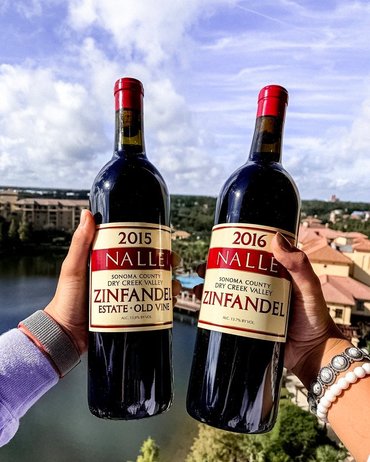
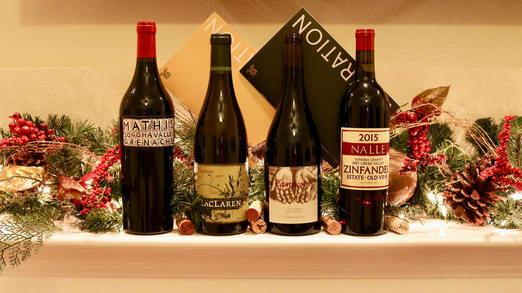

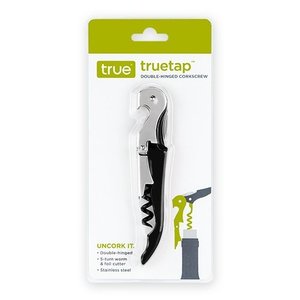
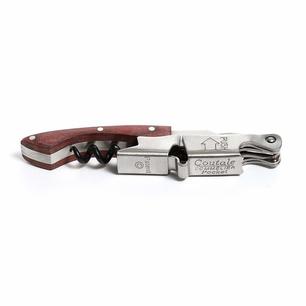
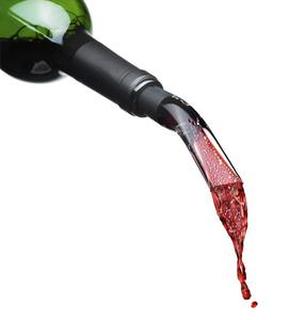
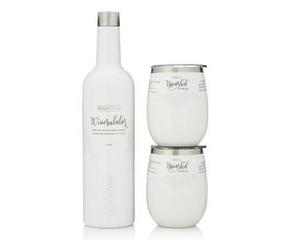

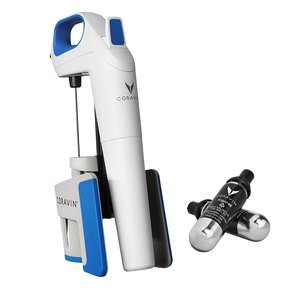
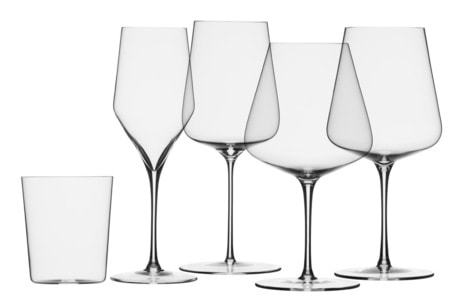
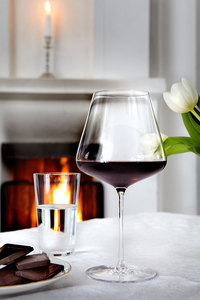
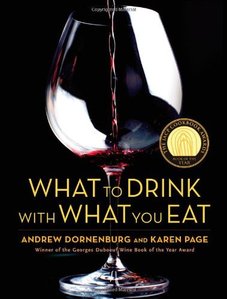
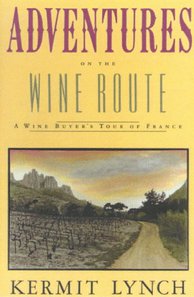
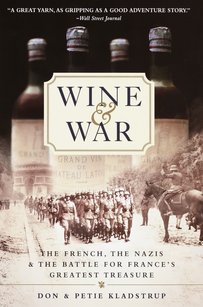
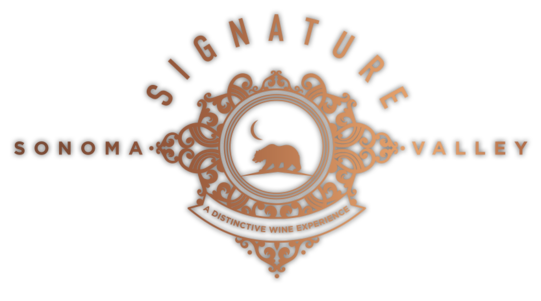
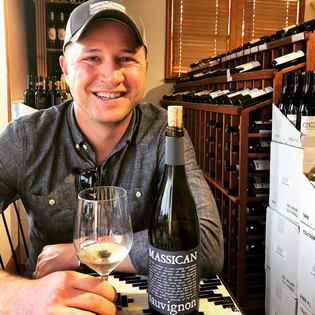
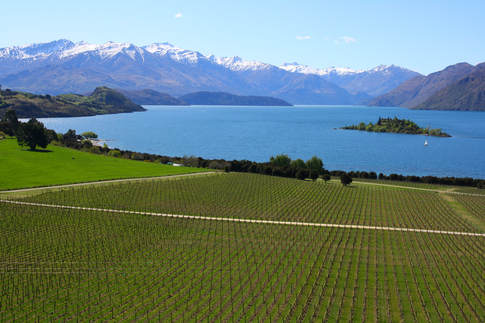
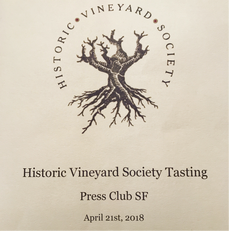
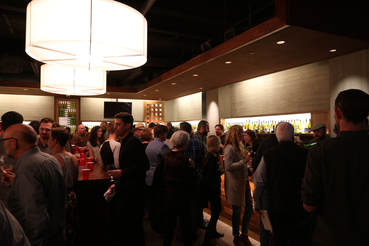
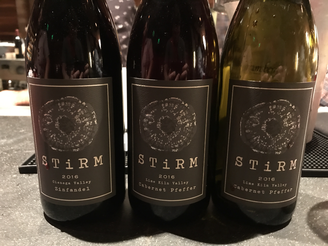
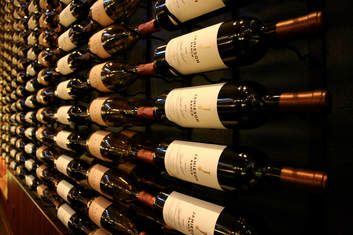
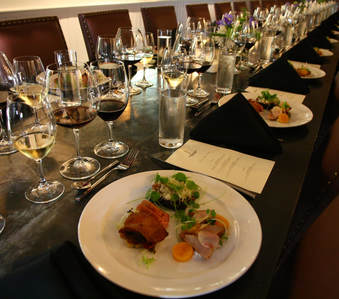
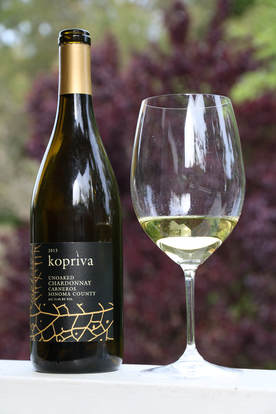
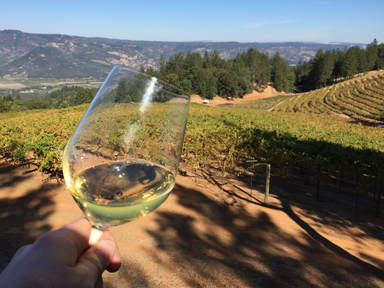
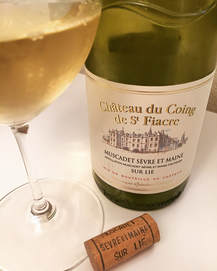
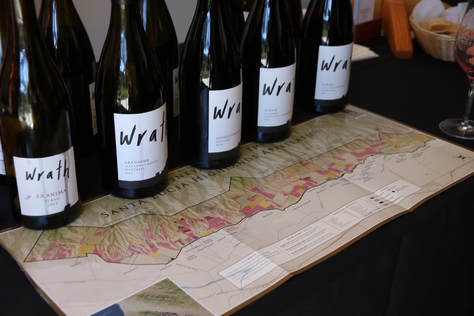
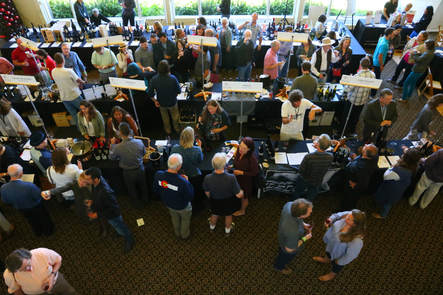
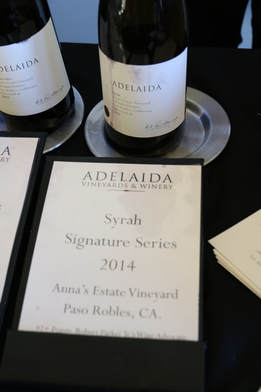
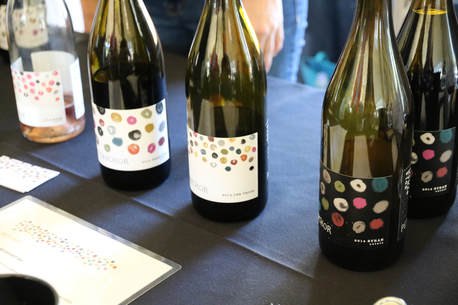
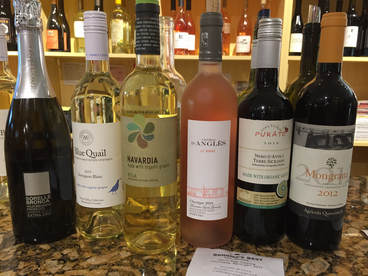
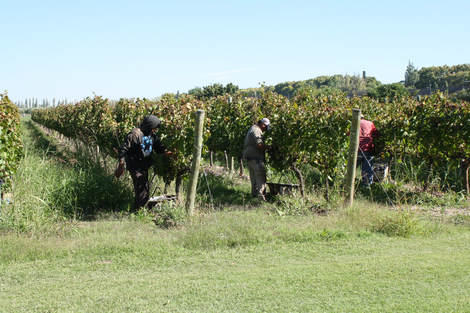
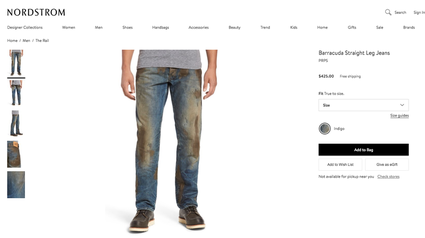
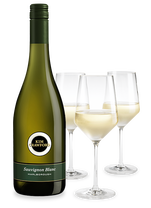

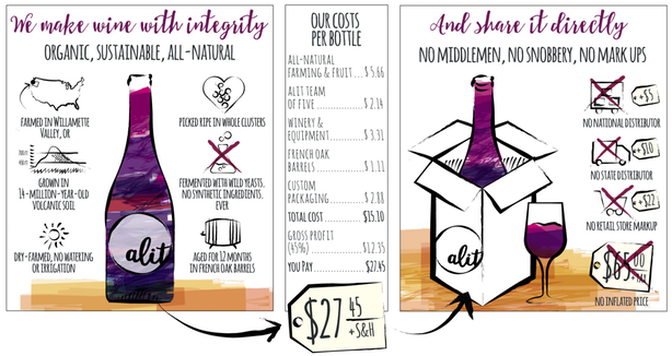
 RSS Feed
RSS Feed

